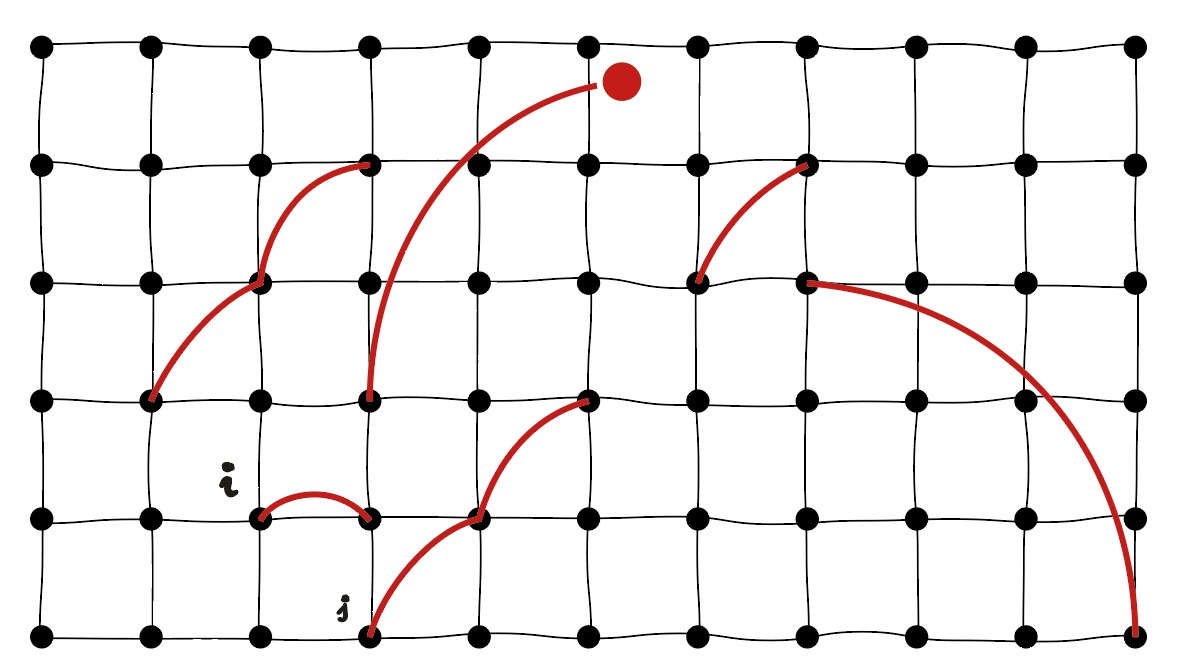A plunge into universality
Recent research carried out in the Institute for Theoretical Physics investigated universal scaling in non-homogeneous lattice systems.

Physicists are fond of classifications: bosons and fermions, conductors and insulators – every branch of physics has its darling labels. When research shows that physical systems with seemingly little in common share one such label (which is to say, there exists a standpoint from which they can be described in much the same way despite their specificities), the classification exercise can become extremely powerful. Universality classes may then well deserve a special mention as a mighty categorisation tool.
The concept of universality is closely linked to critical behaviour. In thermodynamics, critical points identify conditions (of pressure and temperature) where clear boundaries between phases – liquid and vapour, for example – cease to exist. Researchers have known for a while that physical systems that are very different may behave surprisingly similarly in the vicinity of critical points. What does 'similar behaviour' mean in this context? Near critical points, changes in some properties of a given physical system are captured by power laws featuring so-called critical exponents. If different systems near a critical point can be described with the same set of critical exponents, it means they display the same critical behaviour and belong to the same universality class. Researchers further showed that there exist scaling laws that establish simple mathematical relations between critical exponents.
Universality is so appealing to physicists because it simplifies the study of complex systems by implying that detailed knowledge of microscopic interactions is often unnecessary to predict macroscopic behaviour near critical points; understanding the symmetry properties and dimensionality of the system, for example, may be enough. In the case of lattice systems with finite-range interactions, universality means that critical exponents are independent of changes in the interaction range or in the lattice structure.
Abundant experimental data show how many different physical systems can be arranged neatly into few universality classes, and there exist accurate empirical estimates of the critical exponents for each of these classes. On the theoretical front, researchers have been striving to refine their models to match their derived exponents with experimental values. However, theoretical studies of universality and critical scaling have been mostly limited to homogeneous systems, that is, physical systems where the microscopic constituents are found on the sites of a regular lattice.
In recent work published in Nature Communications, Professor Nicolò Defenu from the Institute for Theoretical Physics and collaborators from the University of Heidelberg in Germany studied the universality of scaling phenomena in a prototypical non-homogeneous system, known as a long-range diluted graph, with a dimension that can take on integer and non-integer values. On this graph the team simulated a microscopic model called the self-avoiding random walk (SARW), which is well-known in statistical physics as a simple example of universal behaviour. The researchers computed the critical exponent for the SARW as a continuous function of the dimension and found evidence of universal scaling on the graph. Indeed, their numerical simulations show good agreement with theoretical predictions of universal behaviour that are derived from scaling arguments not based on assumptions about the graph structure, and this agreement holds for a broad range of integer and non-integer dimensions.
Defenu and co-authors discuss openly the conjectures at the core of their study, which they regard as one step in a longer-term investigation. They are confident that this work will contribute to reviving theoretical research on universality in complex physical systems. They also believe that this line of investigation will be an important theoretical counterweight to experimental quantum simulations of complex non-homogeneous systems such as the ones that can be realised with Rydberg atoms confined in optical tweezers. From a broader perspective, inhomogeneous systems occur in fields as diverse as epidemiology and information networks, so a deeper understanding of the universal behaviour of these complex systems is expected to have implications far beyond physics.
Reference
Bighin, G., Enss, T. & Defenu, N. Universal scaling in real dimension. Nat Commun. 15, 4207 (2024). external page DOI:10.1038/s41467-024-48537-1